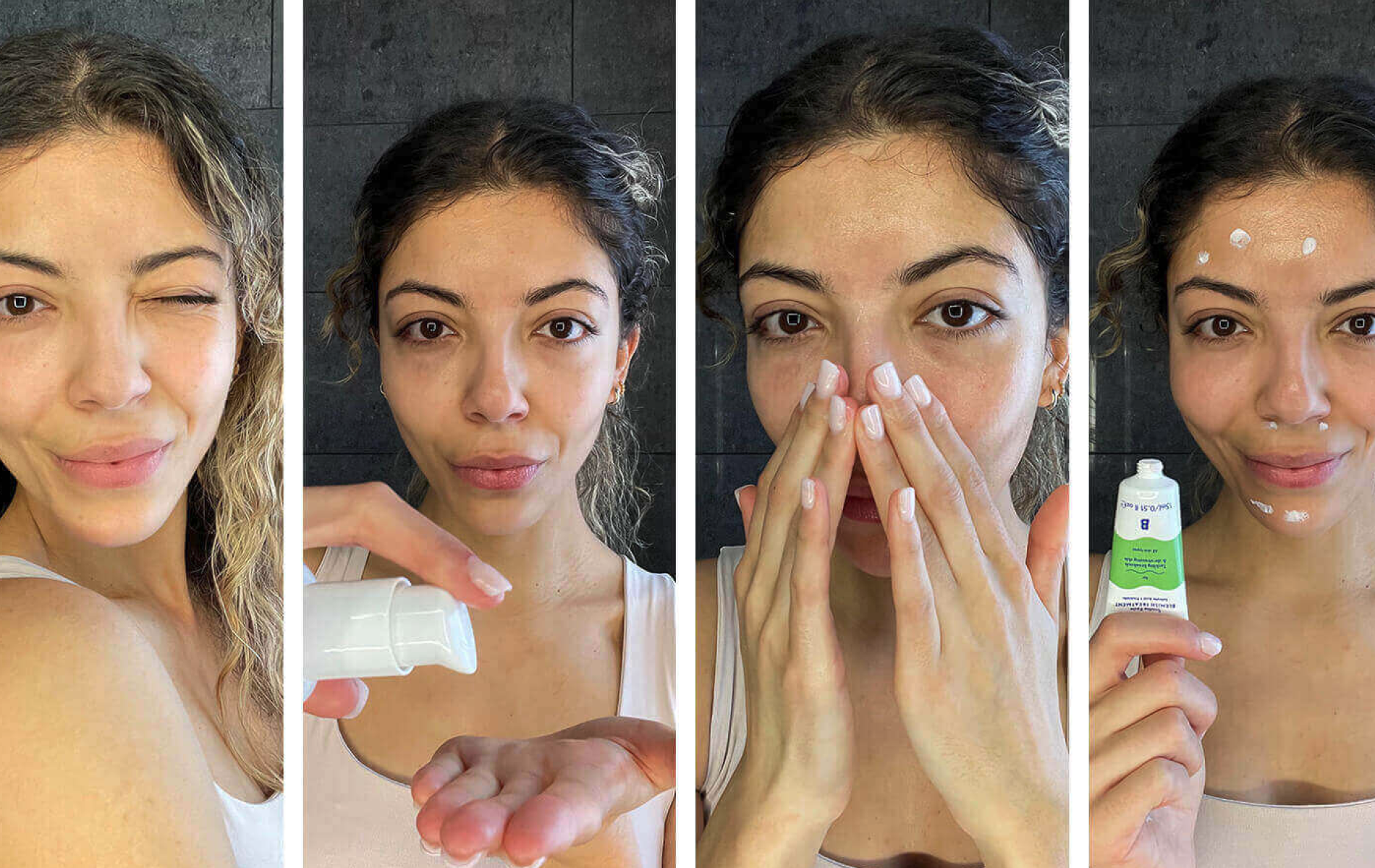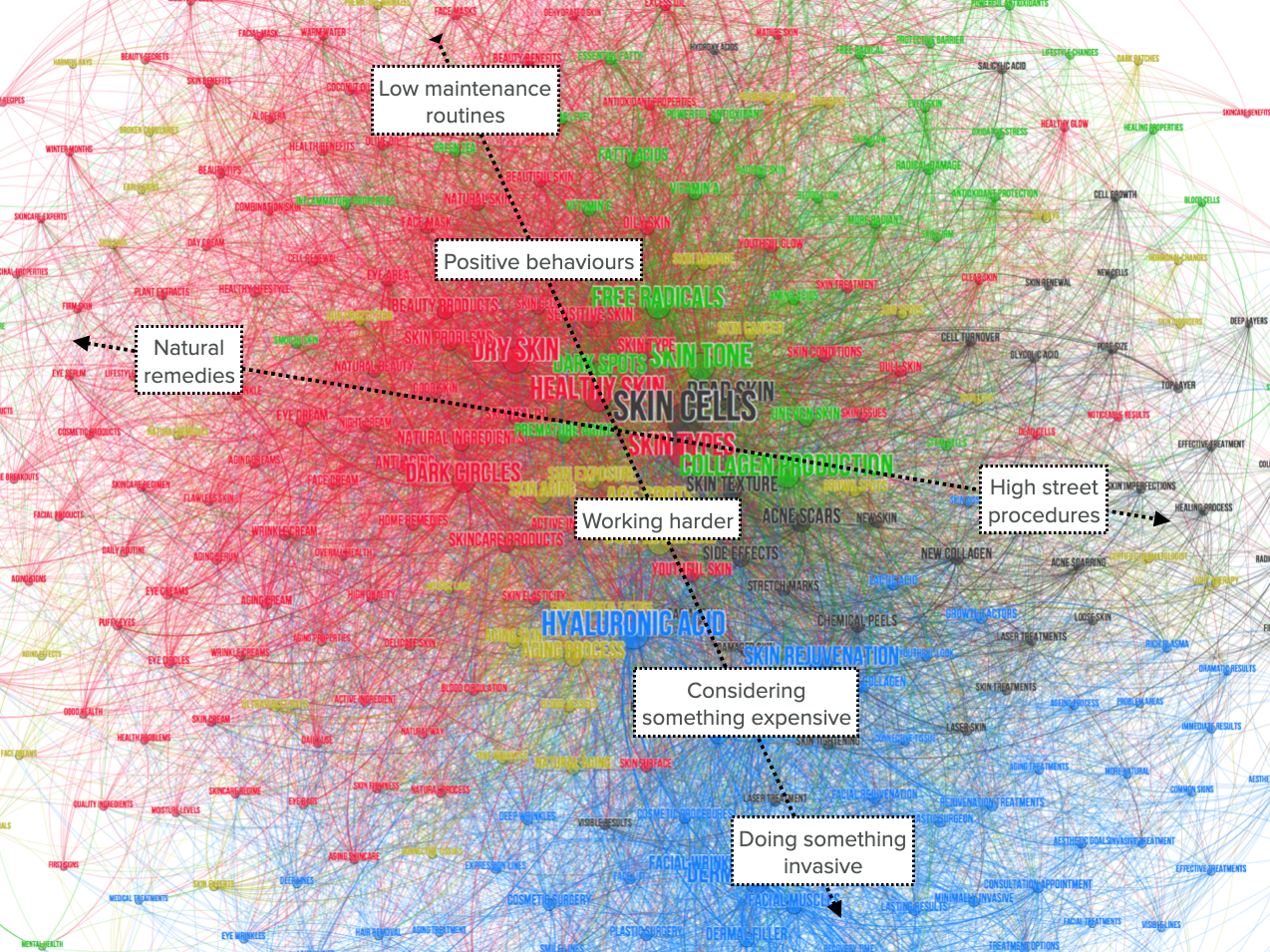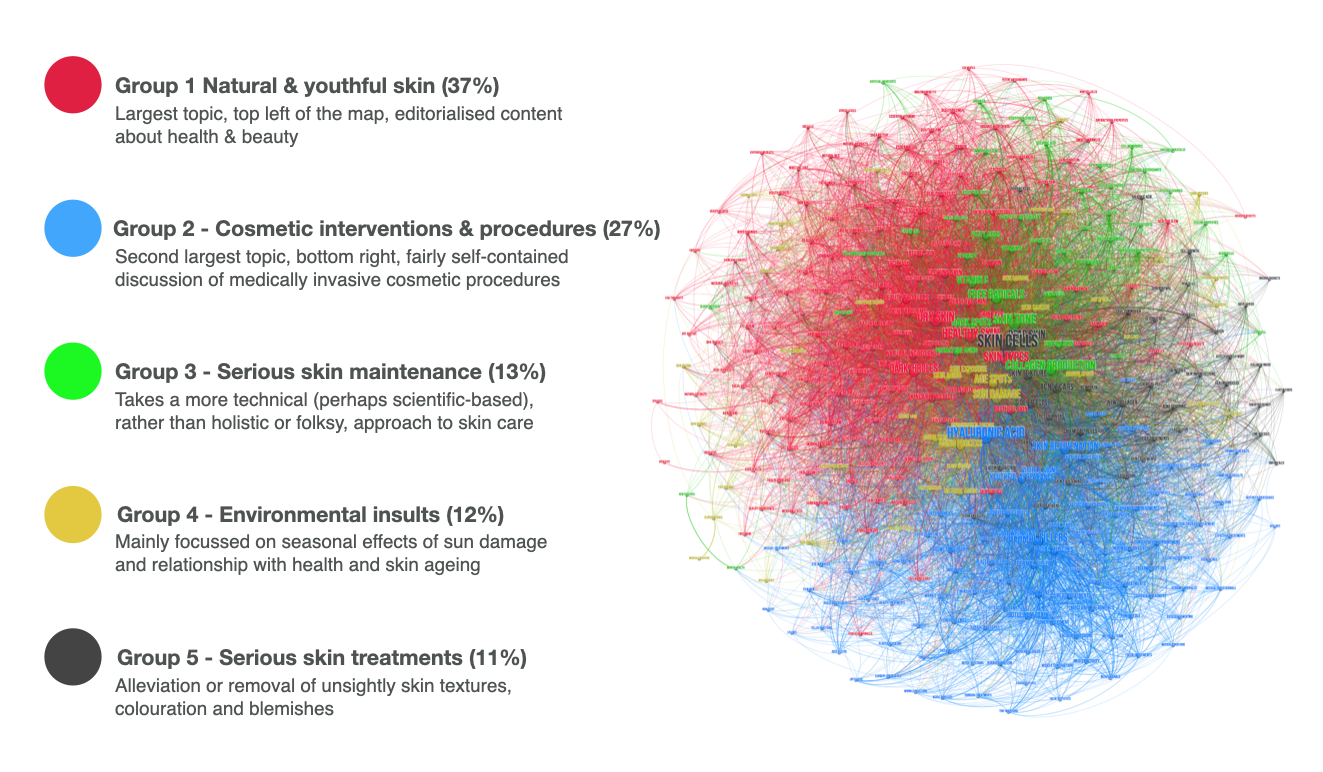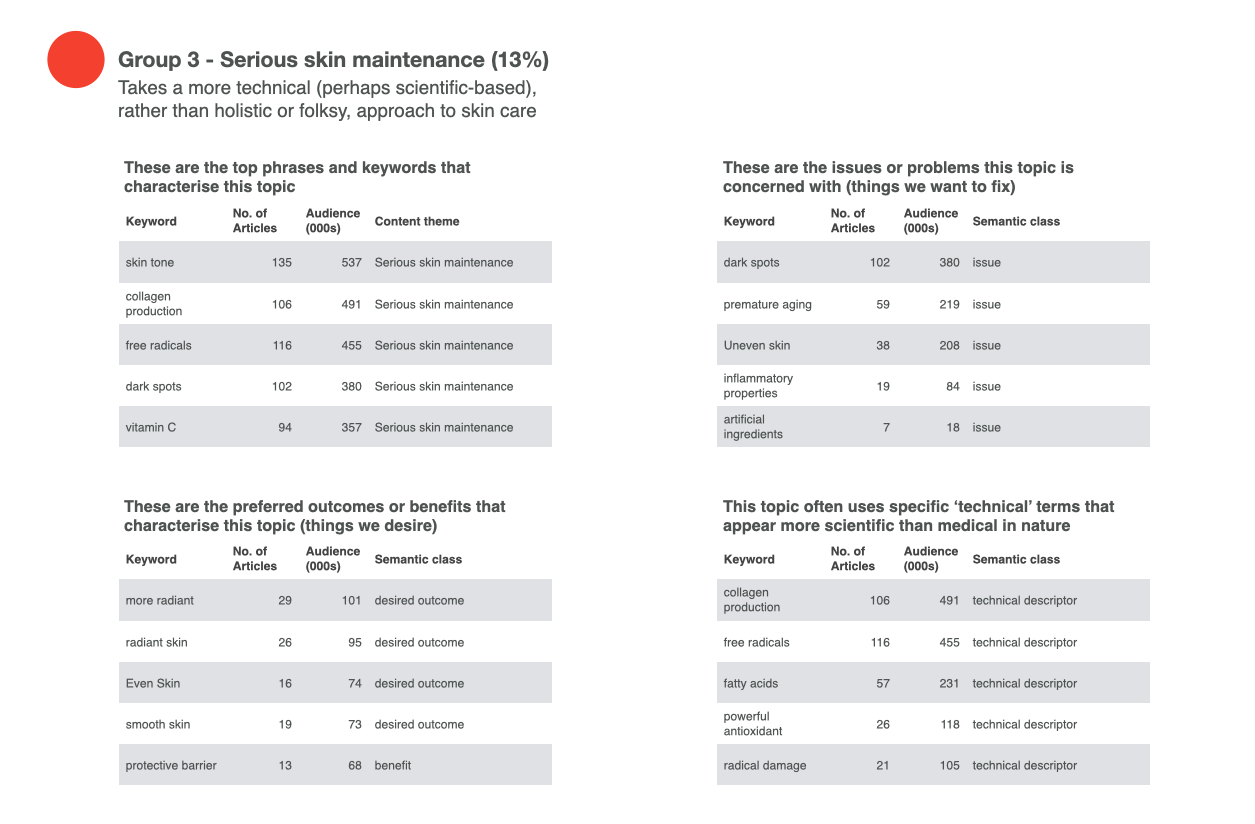"Colourtext always take a fresh approach to discovering hidden patterns in data. Whether you want to conduct segmentation or mine your CRM for deep insights, they will help you see your customers , and what they are seeing , in new ways."

Quant Semiotics helped a new health brand understand the hopes, fears and desires at play within the anti-ageing skincare market.
Nuchido is a new anti-ageing health brand that used Quant Semiotics to understand the primary customer base for its health supplement product and expand from there into the topical skincare market. The brand's first product is called Nuchido TIME+, a new generation of dietary supplement developed by scientists in the U.K. It's part of a growing trend of healthy ageing brands that boost levels of NAD+ in mature adults.
NAD+ (Nicotinamide Adenine Dinucleotide) is a natural molecule found within every living cell of our bodies and we depend upon it to convert the nutrients from our food into the energy we need to survive. When we're young our bodies naturally make and retain high levels of NAD+. But as we age our NAD+ levels drop by 50% every 20 years and this decline has been linked to the onset of ageing. A growing body of scientific evidence suggests one of the best ways to combat ageing is to maintain high levels of NAD+ throughout adulthood.

The TIME+ NAD booster supplement focuses on regaining youthful health & vitality and maintaining peak mental and physical performance for as long as possible. Nuchido aims to launch a follow-on topical skincare product that focuses on removing the visual signs of ageing, in particular preventing or reducing facial lines, wrinkles and sagging skin. To support the development and launch of this product Nuchido asked Colourtext to investigate the disposition of the anti-ageing skincare market. The research objectives of the study were to:
- identify the key anti-ageing topics currently at play across online media
- understand how these topics are framed conceptually
- characterize the language use to express each topic
- indentify key influencers within the anti-ageing space
- develop an activation framework that Nuchido can use to optimise its product launch
The capabilities of Quant Semiotics were a good match for this brief.
What is Quant Semiotics?
Quant Semiotics is a data analysis and segmentation methodology that combines computational text and complex network analysis to segment a wide range of quantitative and natural language datasets.
It's important to appreciate from the get-go we're talking about *really big* datasets because scale is a crucial factor here. Sources like focus group transcripts or open-ended responses from market research surveys are relatively small in terms of word count. The best way to analyse this kind of data is to use traditional, largely manual, approaches like semiotics that use qualitative frameworks.
But when the word count gets really big, words stop behaving like words and we have to begin treating them like numbers. This is when Quant Semiotics comes into its own, hence the name.
Quant Semiotics leans heavily on complex systems theory (a branch of information theory - see Claude Shannon) that analyses bodies of text as networks of interconnected elements. In very large datasets with huge word counts almost all information lies in the topological and statistical distribution - the pattern - of interactions of keywords within the data. You can see this kind of network visualised in the image below.
The meaning of individual words and their immediate context becomes much less important than the statistical dynamics of their combinations. This will feel very counter-intuitive to Qualitative researchers or anyone experienced in 'essay-based subjects' and literary studies, but it's nonetheless true and leads to insights that are inaccessible to conventional methods of interpretive analysis.

The Quant Semiotics process
Quant Semiotics gives us the capability to analyse, at enormous scale, the network of relationships that bind together structurally significant concepts (represented by multi-word keyword combinations) within vast repositories of text-based data.
The process began with a detailed SEO-style keyword analysis of the market for skincare and related age-management content on the web, which revealed the most frequently searched keyword queries in this space. This gave us a detailed view of the 'demand side' of the anti-ageing skincare market - what consumers ask most frequently and want to know about the most.
We then used this data to capture content from the top-ranking 50-100 page URLs for each keyword on our list, which yielded over 2,500 pages in aggregate. This revealed the most popular online content that best reflects user need across a wide range of topics or themes and thereby represents the 'supply side' of the market.
We thereby used the questions people ask most frequently about anti-ageing skincare issues to find the web content that best reflects individual concerns, personal aspirations and broader consumer demands.
This generated a huge amount of market-relevant data that we were able to crack open using Natural Language Processing and Semantic Analysis techniques. This began by identifying significant ideas and concepts within the content we collected.
The database of 2,500+ web articles contained just under 2 million words, which in turn comprised of around 40,000 distinct words and multi-word combinations. A semi-automated/ semi-curated semantic analysis revealed that just 550 distinct words within the data were sufficient to characterise market discourse and the things it talks about.
Finding those keywords was crucial for the next step in the Quant Semiotics process, which used them as inputs for a topologocal network analysis that identified the structure of keyword relationships within the data. From this emerged a network-based content segmentation that naturally divided all of the collected articles into emergent topical components that reflected the key themes and memes within the anti-ageing skincare market.
A major USP of Quant Semiotics is its ability to visually map relationships between the main concepts and themes at play within a market. In the image below we see the emergent structure of all the main hopes, fears and desires expressed in this market. The network map was found to have self-organised itself along two highly revealing axes.

Grouped on the left of the horizontal east-west axis are a wide range of natural and organic skincare elements that wouldn't seem out of place in a country kitchen. In contrast, over on the right hand side we find all of the chemical and technology based 'quick fix' procedures that characterise the Main St beauty salon and lunchtime botox market.
The vertical axis is perhaps even more interesting. At the top we find clustered a lot of content about simple daily beauty routines, perhaps consumed by people who are still young enough not to feel too concerned about the youthfulness of their complexions. However, as we move further down this axis the level of commitment to active skincare and age-management grows significantly. Towards the bottom of the map are clustered a range of expensive skincare treatments, including invasive cosmetic surgery.
It almost seems obvious as a post-rationalisation that content within the anti-ageing skincare market should be structured according to the conceptual polarities of 'natural care' versus 'chemical treatments' and 'low maintenance routines' versus 'invasive surgery'. But prior to the data analysis we might have guessed that any number of conceptual relationships could emerge, so it's highly reassuring when such an intuitive and intelligible picture resolves naturally from Quant Semiotics.
Quant Semiotics activation framework
The key enabler of Quant Semiotics is that it allows the main topics and themes at play within a market to be organised into a clear activation framework. We discovered 5 emergent content themes within the anti-ageing skincare market, which are indicated by the coloured network segmentation map below.

The map and its underlying analysis reveals for the first time the relative size of each topical segment in terms of its share of all content within the market and the size of audience engaging with each theme. We can count the number of articles within a content segment, the number of web searches and the number of website visits a market topic generates.
Each market segment is futher broken down into the core components of its main theme. For instance, in the illustration below the core concepts that animate 'Serious Skin Maintenance' (Content Segment 3) are organised into a fully quantified, rigorous and simple activation framework. This provides an 'activation playbook' that Nuchido is using to ensure its skincare product marketing aligns with the demands, mindset and language of consumers engaged in this market space.

This activation framework yields a 'content profile' for each of the anti-ageing skincare customer need states defined by the 5 main content segments. Related data from online keyword search volumes and their related page impressions quantifies the level of interest or demand for specific skincare topics and themes.
This information can then be used to segment other skincare related content on the web, which in turn can be used for targeting digital customer acquisition campaigns with need-state specific ad copy. Moreover, the activation profiles for each segment can also be used to align content on a brand's D2C website with the skincare need states of visiting customers.
If you'd like Colourtext to think about how a Quant Semiotics analysis for your brand and market might work get in contact with us here.